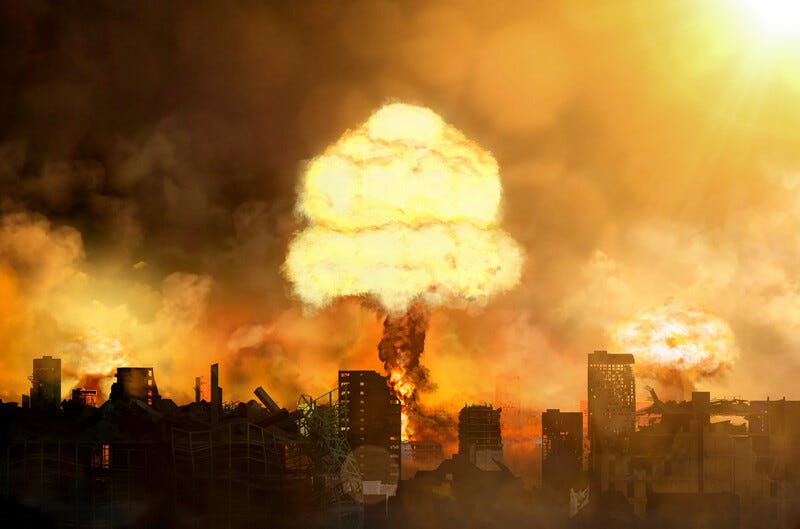The following is adapted from a sermon given on March 20, 2022.
January 13, 2018, was like any other Saturday morning. A Saturday morning in Hawaii probably included going to breakfast or walking down the beach and enjoying the ocean waves. Or maybe people were taking the opportunity to sleep in. It was a normal Saturday morning. Until it wasn’t.
At 8:07 am, people’s cell phones started to buzz across the state. A message appeared on their phones that said the following: BALLISTIC MISSILE THREAT INBOUND TO HAWAII. SEEK IMMEDIATE SHELTER. THIS IS NOT A DRILL. Television had a more complete message: “The U.S. Pacific Command has detected a missile threat to Hawaii. A missile may impact on land or sea within minutes. THIS IS NOT A DRILL. If you are indoors, stay indoors. If you are outdoors, seek immediate shelter in a building. Remain indoors well away from windows. If you are driving, pull safely to the side of the road and seek shelter in a building or lay on the floor. We will announce when the threat has ended. THIS IS NOT A DRILL. Take immediate action measures.”
If you remember this was at a time of escalating tensions with North Korea. They had perfected their missile technology and now it could reach Hawaii and the West Coast. The people on the Hawaiian Islands thought that this was it. A nuclear missile was inbound and would soon hit Hawaii.
The result was that for half an hour, people took the announcement seriously. For 30 minutes, folks in Hawaii believed this wasn’t a drill, but the real thing. People driving on the interstate hid in a tunnel. Crowds at a gymnastic tournament left to seek shelter. Students at a local university find the fallout shelter only to find the doors locked. Cars sped down freeways at 100 MPH. For 38 minutes, people in Hawai’i truly believed their world was about to end. At 8:45 am, another message was sent out stating that there was no missile inbound, it was a false alarm. Other than the fact that thousands of Hawaiians were going to seek therapy, people tried to get back to enjoying a Saturday.
If you were in that situation, what would you do? If you knew that you only had maybe 30 minutes to live, what would you say? What would you be sure of?
What A Beautiful World
There’s a difference between optimism and hope.
The following essay is adapted from a sermon given during Lent in 2021.
A few years ago when my husband Daniel and I were back in my native state of Michigan, we went to the Grand Rapids Public Museum which is in downtown Grand Rapids. They had interesting exhibits about midcentury design in Michigan. We are both suckers for mid-century modern anything so we were in our element.
I can remember seeing some examples of furniture designed by Charles and Ray Eames for Herman Miller, and pictures of the General Motors Design Center in Warren, Michigan which was built in 1958 and had this futuristic architecture that showed that the biggest manufacturer in the state was looking forward. In fact, that exhibit screamed optimism. There is this sense that the future is truly bright. In fact, this was the time of what was called the International Geophysical Year.
The IGY was a year-long event in 1957–58 and it was a time when the Communist East and the Democratic West participated in an international scientific exchange. That event launched many innovations that are still around today. Both the US and the USSR used the year to launch their first satellites into space. Plate tectonics was also discovered during this time. The musician Donald Fagen’s 1982 hit “IGY” is about the International Geophysical Year and he paints a future that is bright. It’s a future with high-speed rail, spandex jackets, solar power, and so on. He says over and over in the song: “What a beautiful world this will be, What a glorious time to be free.”
Welcome to Church & Main, the newsletter on Faith and where it interests with politics and culture. What are your thoughts? Drop me a line at denminn@gmail.com.





